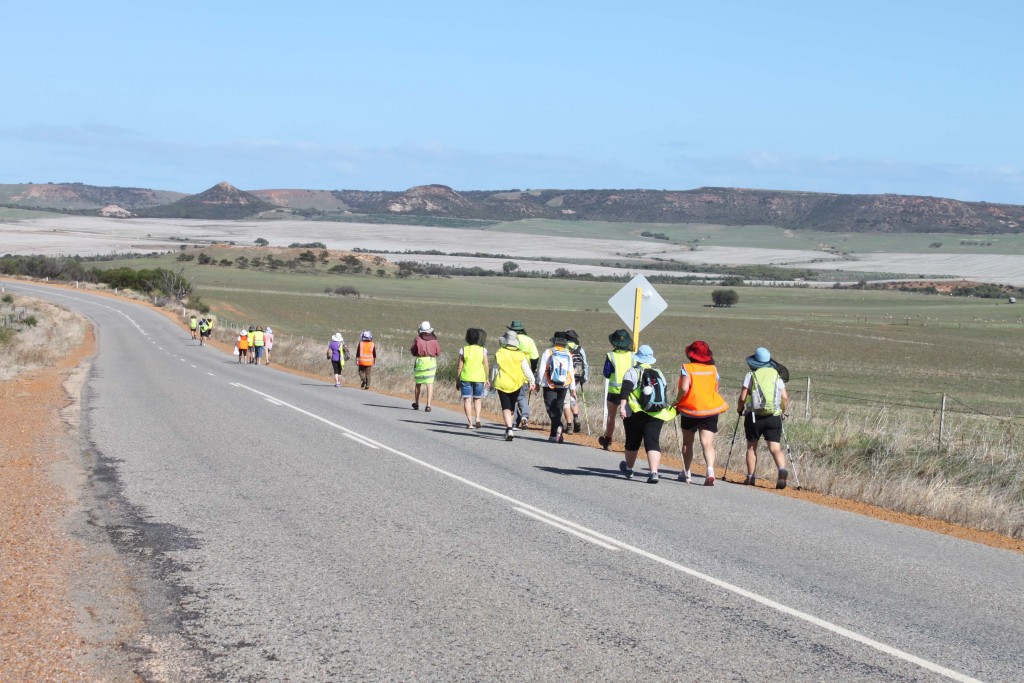
The Camino San Francisco – a pilgrimage across Western Australia’s mid-west region – was earlier this month deemed an overwhelming success by Director of Heritage for the Diocese of Geraldton, Father Robert Cross.
The Camino, literally meaning “the walk” or “the way,” took 31 people on a two-day, 65km walking journey from Northampton to Geraldton that included stopovers at exquisite heritage buildings designed by the renowned late Catholic priest and architect, Monsignor John Hawes.
“In the past, we have tried many ways to bring these heritage buildings to the attention of the public.
“This time, we wanted to do something that went beyond taking a tour of a place and appreciating its beauty,” Fr Cross said.
“We wanted to insert the spiritual element into the experience of these places. One of the things that the Church asks us to do with our heritage is to use it essentially for evangelisation, and these buildings have a capacity to evangelise.
“One can appreciate the beauty of a building but Mgr Hawes was trying to convey a deeper message through his work, which is to lift our eyes to God and experience His presence,” he added.
Commencing their journey on Friday evening, 1 May, at Monsignor Hawes’ Church of Our Lady of Ara Coeli (Altar of Heaven) in Northampton, the pilgrims woke the following morning to visit Hawes’ Sacred Heart Convent.
They then followed a route to the historical, ecumenical Church at Gwalia and proceeded along the Northampton – Nabawa road to Nabawa and Nanson.
After an overnight stay at Our Lady of Fatima in Nanson, the pilgrims continued 30km through the stunning Chapman Valley, visiting Nazareth House, St Lawrence’s Bluff Point, and arriving at Geraldton’s Cathedral of St Francis Xavier Avenue on Sunday, to be welcomed by Geraldton Bishop Justin Bianchini.
A special ceremony at the Cathedral was held in which Bishop Bianchini handed each pilgrim a certificate especially designed by local artist and co-organiser of the Camino, Julie Weir, verifying that they had walked the required distance.
During the entire walk, the pilgrims were equipped with two items: a scallop shell, symbolic of the Camino de Santiago de Compostela and St James in particular, and the Camino San Francisco Passport, a small booklet that was stamped as the pilgrims walked from church to church and which could be used as a journal of memories and recollections.
Reflecting on the significance of this event for the Diocese of Geraldton and the Catholic Church of Western Australia, Fr Cross linked the Camino to a concept he studied at the Pontifical Gregorian University in Rome.
“During a course I undertook on Cultural Heritage, the term valorizzazione, meaning “to valorise”, kept on resurfacing. I believe we need to valorise our heritage here and realise its potential.
“One of the ways we can work together to realise the potential of our heritage buildings is also to invest in their maintenance and care.
“We could do more in creating events like this where the central aim is certainly the spiritual aspect, but which could also create an interest among the public towards the maintenance of these buildings,” Fr Cross said.
Fr Cross hopes to hold another Camino around mid-August to early September this year, perhaps extending it to a three-day walk of 20km per day.